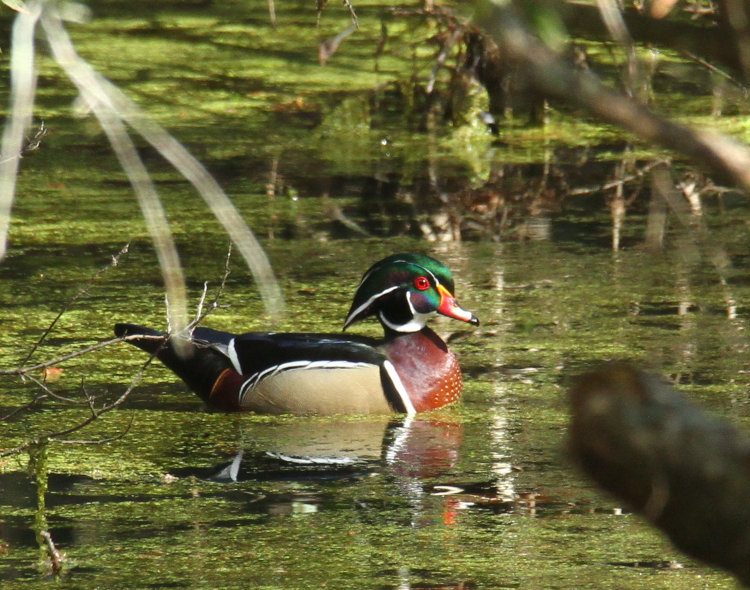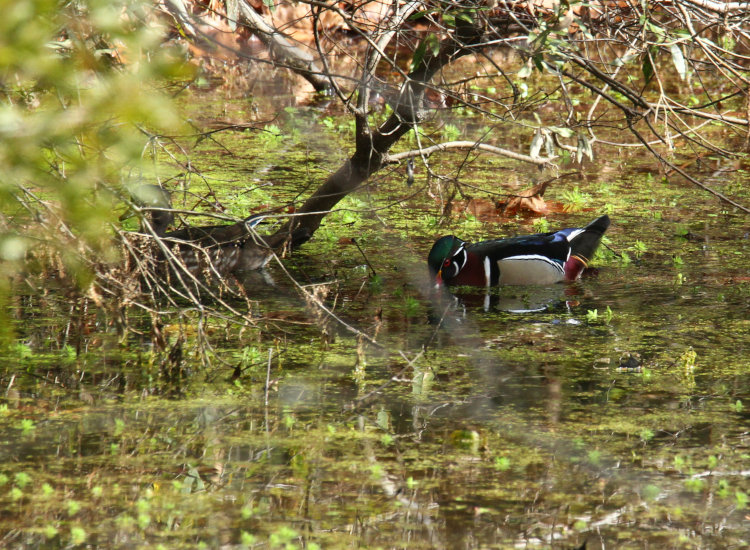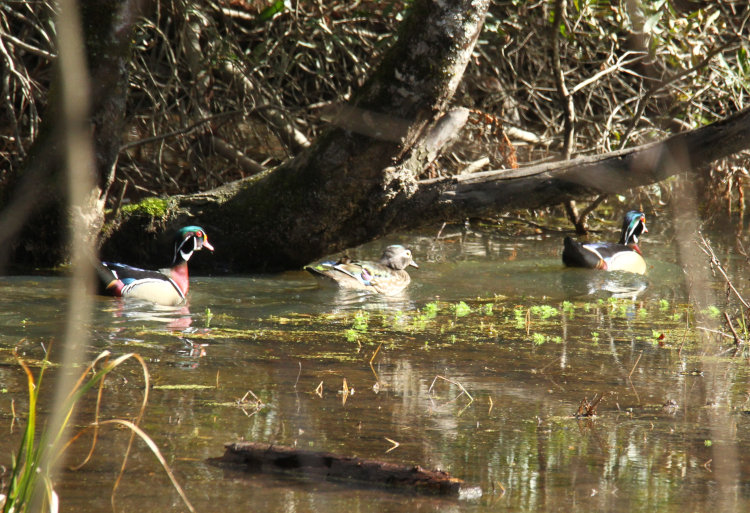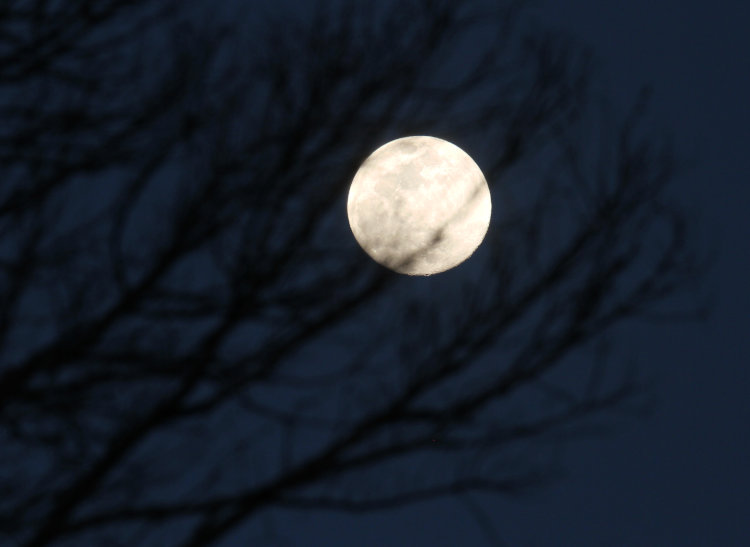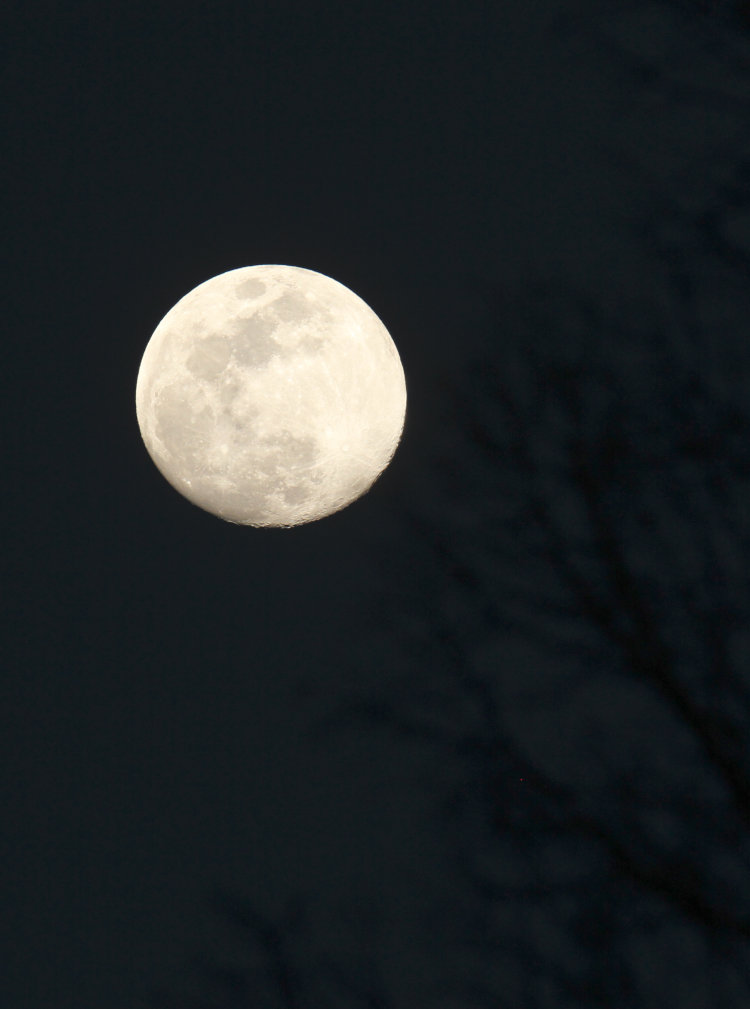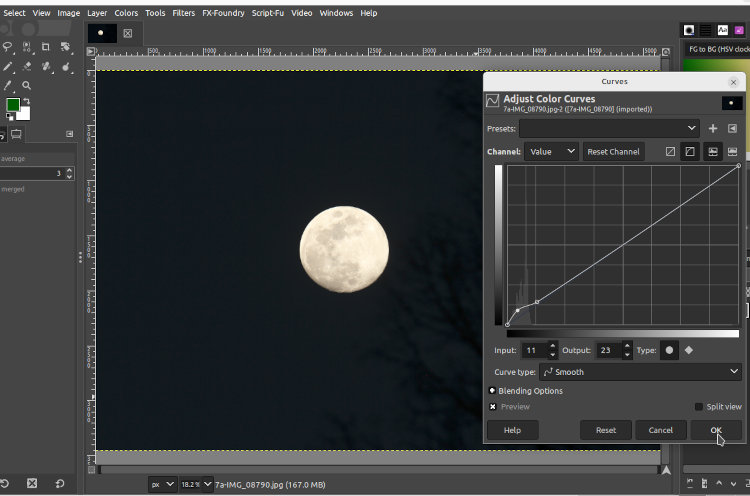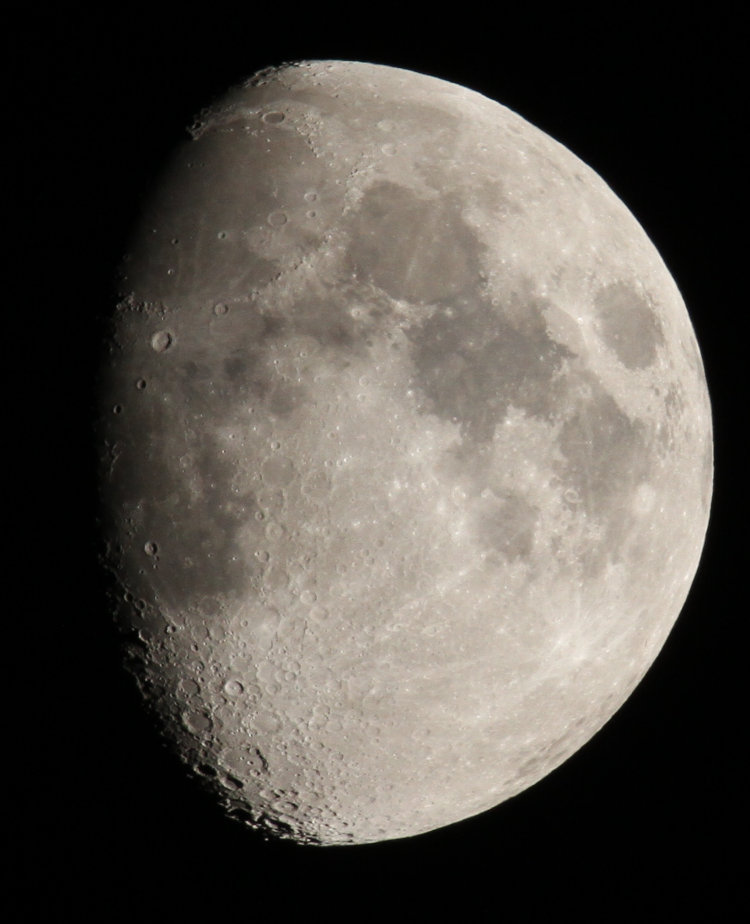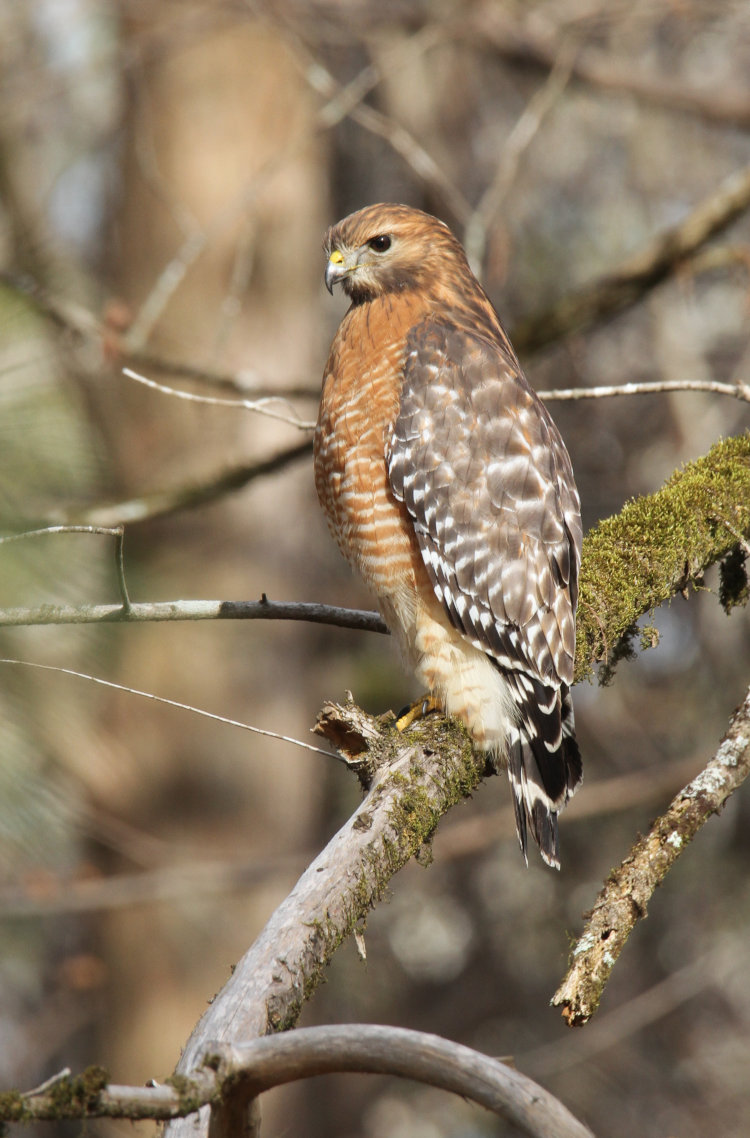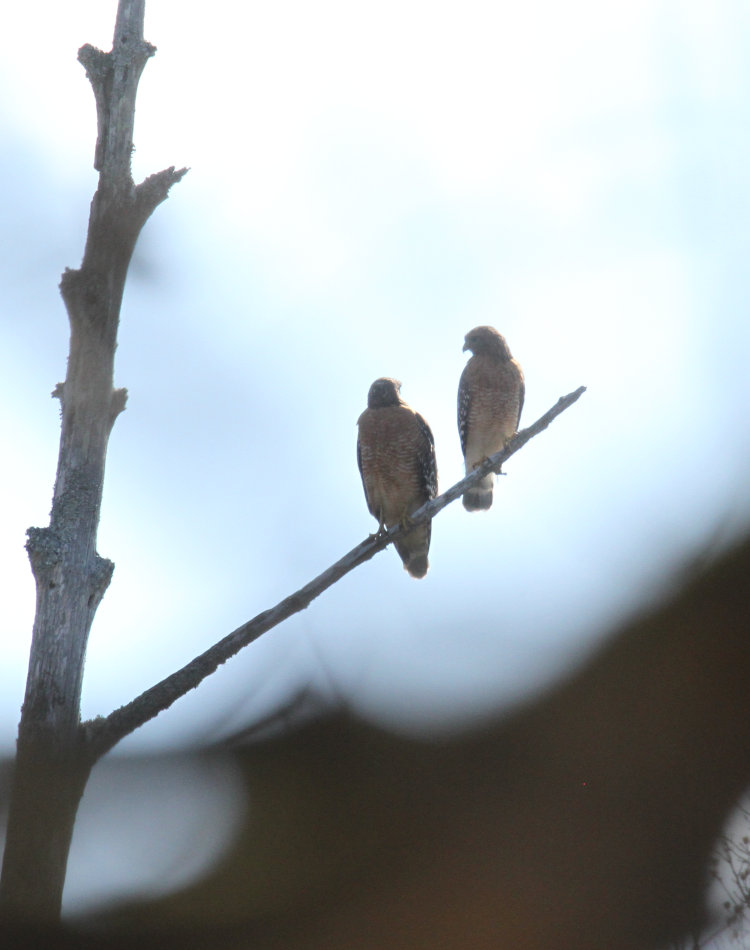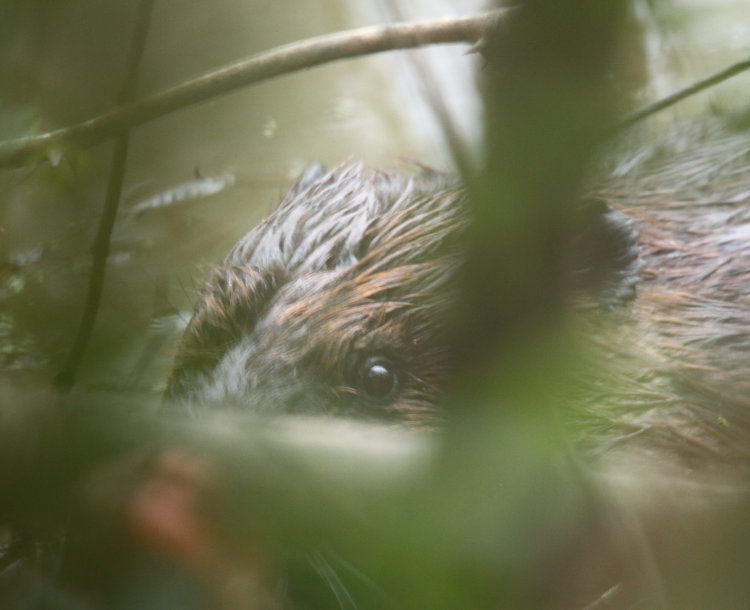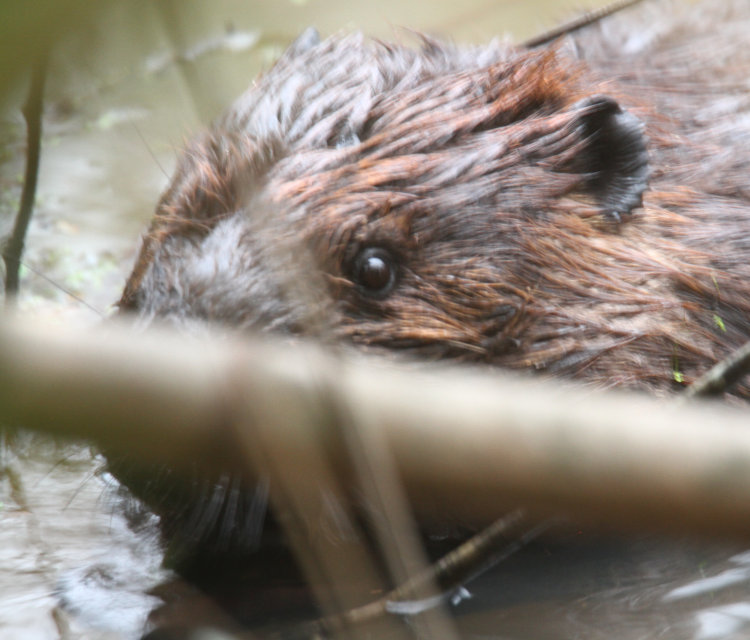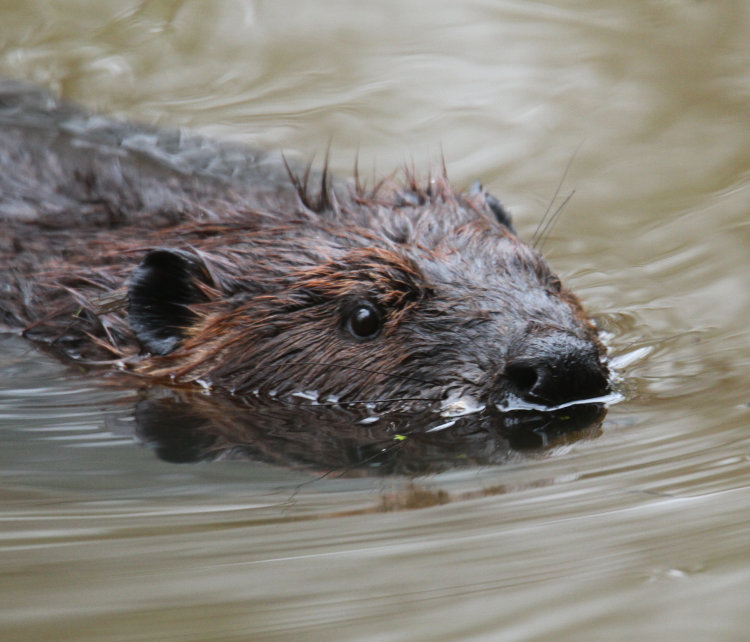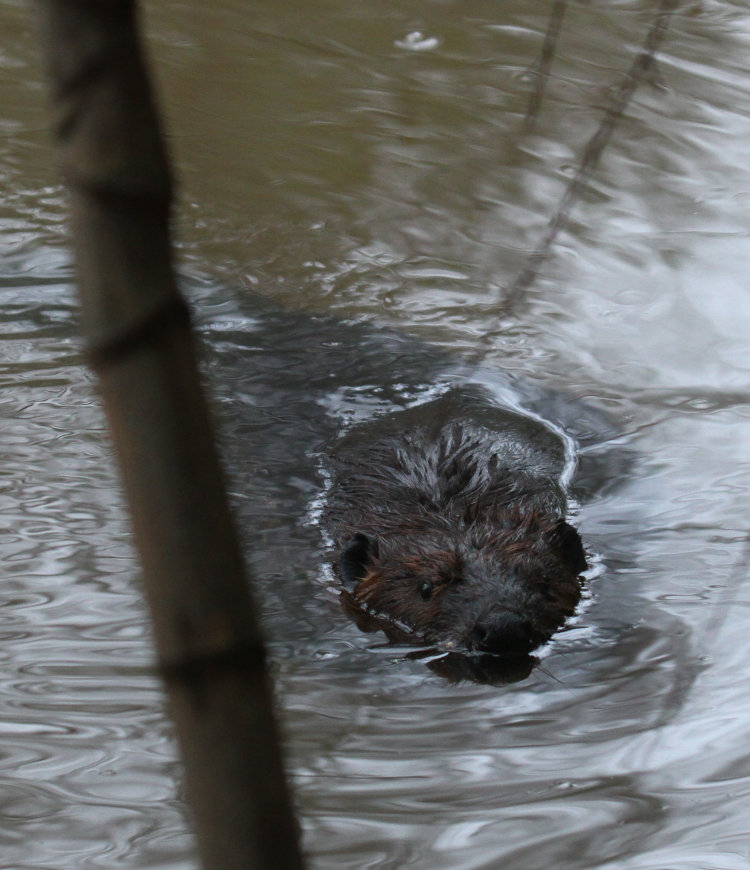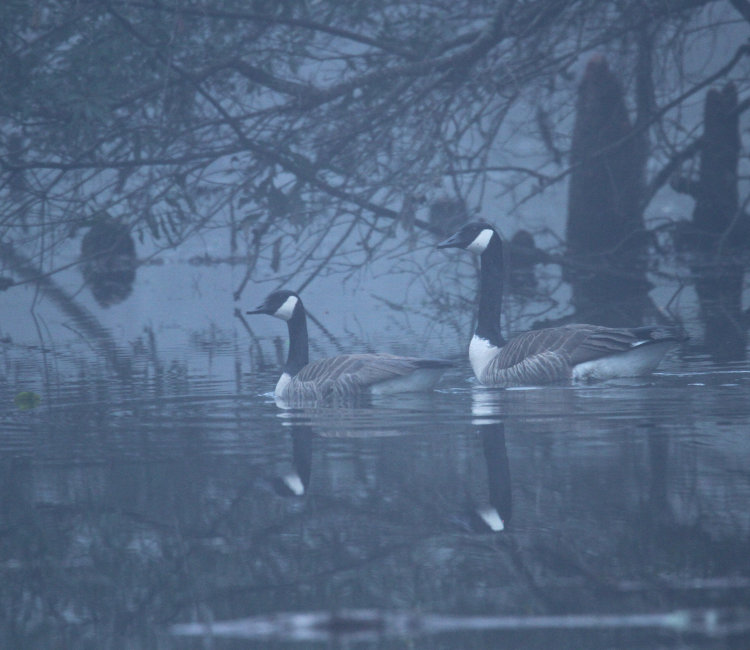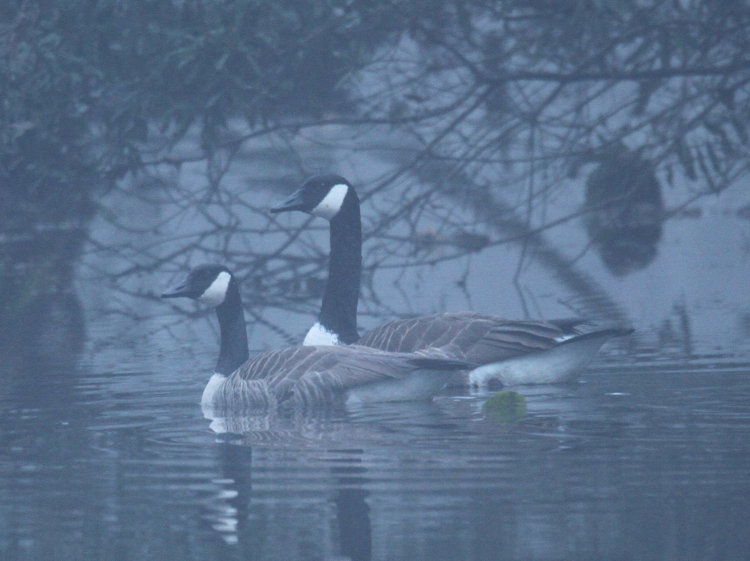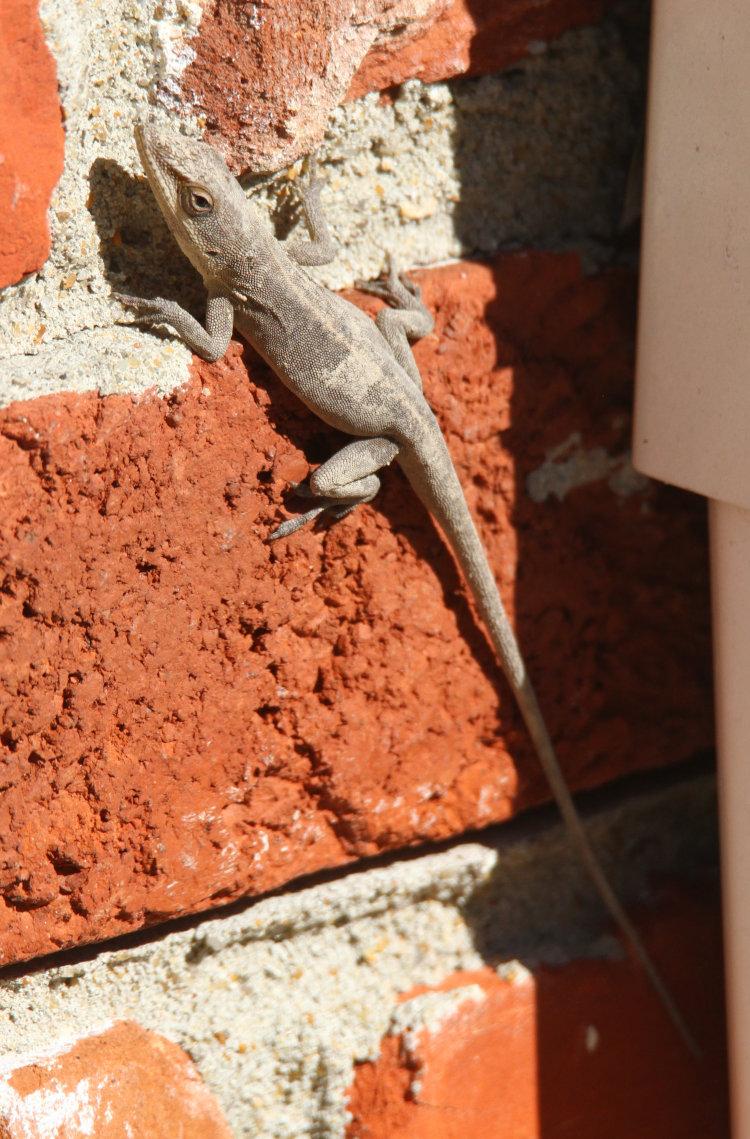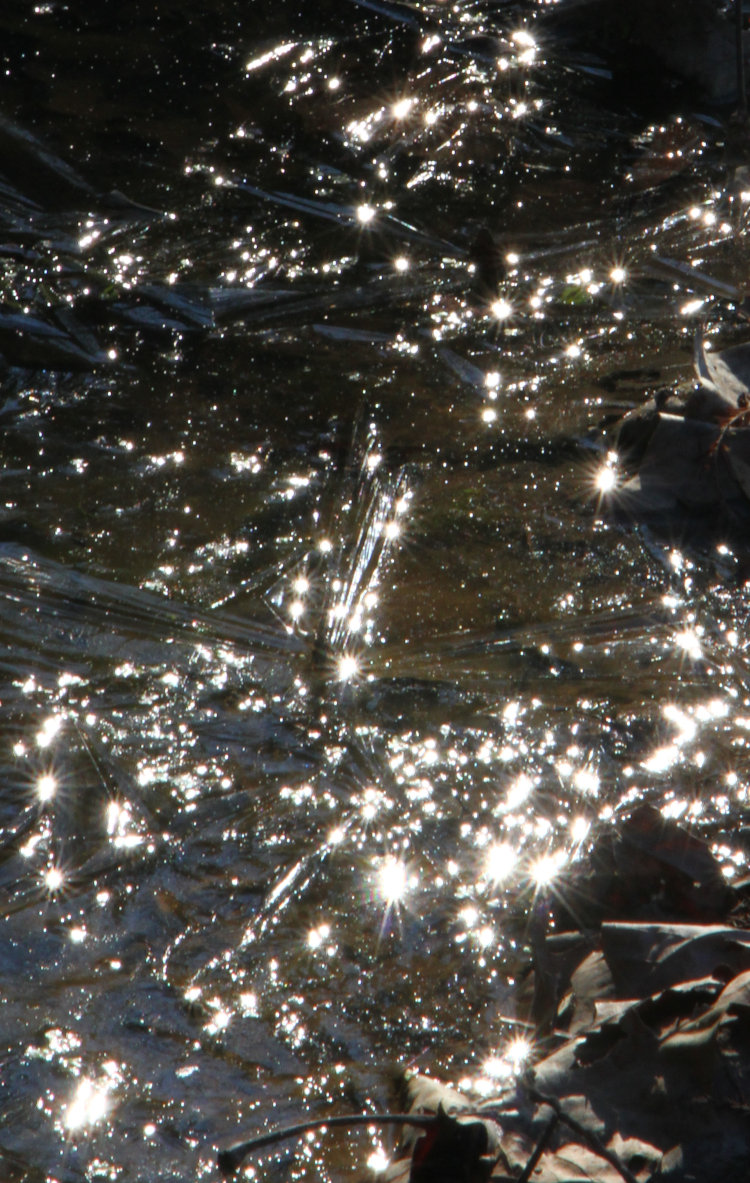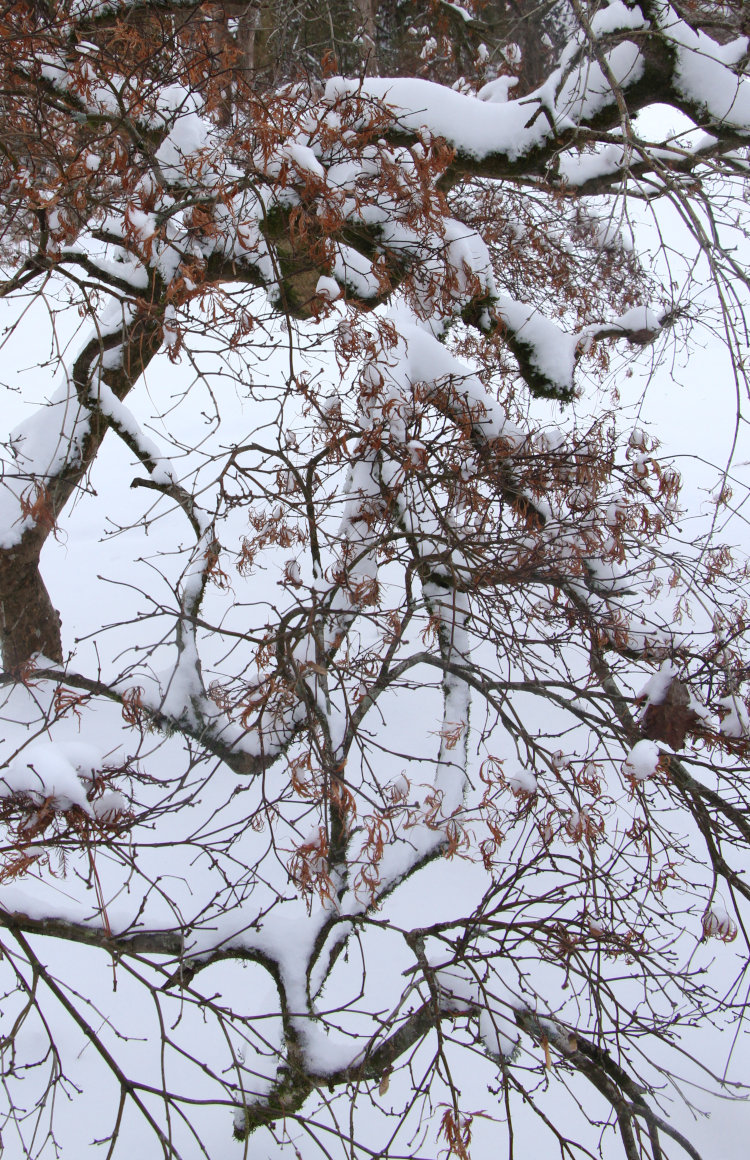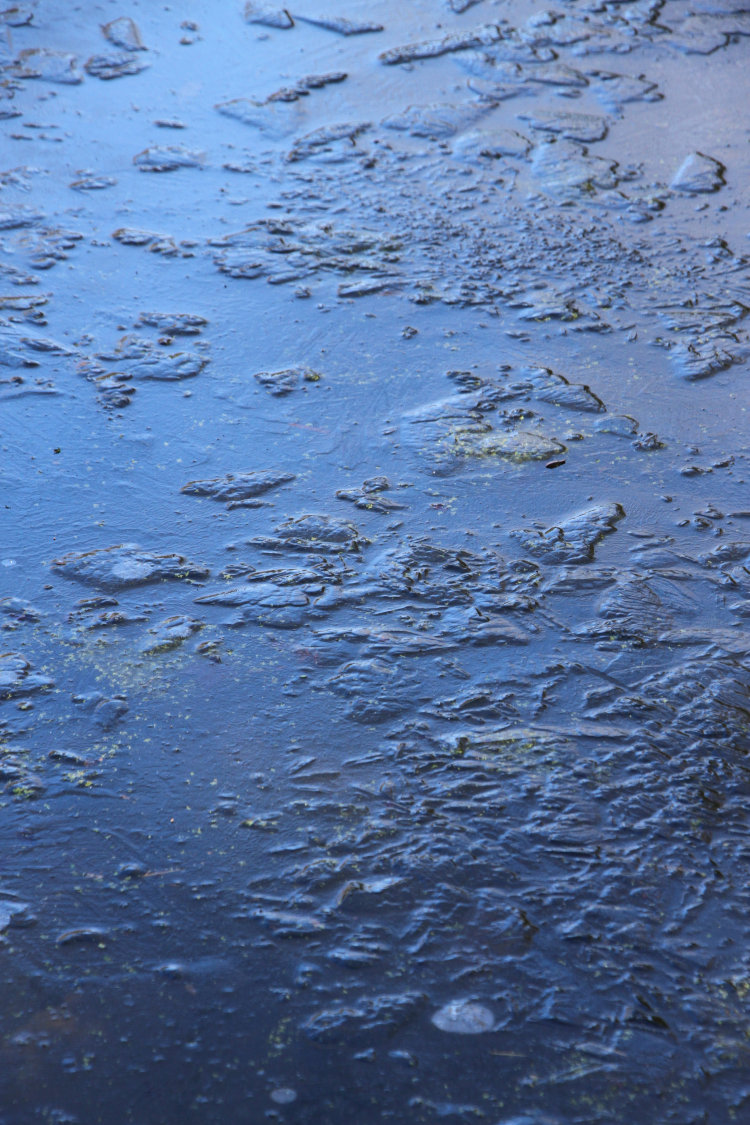“Red” is the wildly unoriginal name we’ve tentatively given to the female red-shouldered hawk (Buteo lineatus) that hunts in the yard – we should do better, but it’s what we twigged onto to give updates: “Red’s out on the pole,” and, “Red’s perched in the backyard.” The male remains nameless, mostly because he’s (to the best of our knowledge – even seeing them side-by-side has provided no easy way to distinguish them, save for perhaps a lighter belly down near the feet) only been observed building the nest and marking territory, and not down right at eye-level in the front yard. Which Red hasn’t done in a while, actually, and we were beginning to wonder why not, even though she’s been seen in other areas nearby.
This was until yesterday, anyway. We were watching the birds at the feeder directly outside the art room when they scattered en masse, and we were just wondering about that when Red plopped down onto the ground, halfway between the feeders and the greenhouse.

Now, I have seen one of them take a shot at a songbird, but this doesn’t seem to be their food of choice, unlike sharpshinned and Cooper’s hawks, and they’re not agile enough to pull this off routinely anyway. So whether she was actually after a bird, or simply saw something compelling nearby, I can’t say for sure, but she did snag something off the ground and hork it down, possibly an earthworm – it kind of looked like that, anyway.
I have to stress that yesterday was cold, well below 10°c, and rainy, not the time to be finding snakes or lizards anyplace, though I wouldn’t necessarily have thought earthworms would be out either, but I have no knowledge of worm habits – I know, and I call myself a nature photographer. I also had to be shooting through double-lane glass, so sharpness is certainly going to suffer no matter what I do; any place that I might be outside to get a view of this area, or any of her hunting spots, will be in plain sight and likely prevent her from even approaching the area. But aside from all that, she sat on the ground for a while before taking a perch up on top of the nearby greenhouse, where she could still survey the region at quite close range.

It was easy to see that her attention was most often on the ground below, in all directions, and some of the birds even returned to the feeder while she was there, garnering no interest; I won’t say she wouldn’t have made a grab for the larger and slower birds like the mourning doves, but while we watched she paid no mind to the titmouses and chickadees. The top of the greenhouse might be slightly over two meters, and it’s mildly heated inside, though whether she could feel this at all is in question.
 But then, for some reason, she decided to move a little lower to the bottom edge of the roof, which didn’t provide the best footing, and she struggled for a few moments trying to get stable – why she thought this was better, I cannot say, because it only moved her about a half-meter closer to any given target regardless. Once she gained a stable perch after her dancing act, she looked directly at the window where we stood to see if we’d witnessed her clumsiness.
But then, for some reason, she decided to move a little lower to the bottom edge of the roof, which didn’t provide the best footing, and she struggled for a few moments trying to get stable – why she thought this was better, I cannot say, because it only moved her about a half-meter closer to any given target regardless. Once she gained a stable perch after her dancing act, she looked directly at the window where we stood to see if we’d witnessed her clumsiness.
From these images, you can also get an impression of the conditions, not just from the low-contrast, bluish light that denotes overcast skies, but also from how puffed up she is, noticeable around the neck and breast, and if you look closely, you can spot raindrops on some of the surfaces; it rained, off and on, all day yesterday.
Since I have space to fill and it’s still Darwin Day, I’ll point out something else, which is how their feathers help equip them for such conditions. Most of the outside body feathers, the coverts, are slightly cupped, and this helps them in two ways: shedding the rain to the outside rather than letting it creep within, and forming air pockets underneath that serve as insulation. Close to the skin are the down feathers of course, serving as spacers to hold more air that maintains the body heat. Birds can raise and lower the coverts at will, retaining or releasing more body heat or becoming sleeker during flight, as well as ruffling them to shed more water, and their water-resistance is from a combination of the interlocking vanes of individual feathers and the oils that the birds spread from their uropygial gland, a little external nub at the base of the tail. Waterfowl that get mired in oil spills not only have to have all the petroleum cleaned off, since it’s toxic, prevents flight, and traps too much body heat, but they have to recover for a while because their natural oils are removed with the petroleum, and they have to become waterproof again.
[While I worked in wildlife rehabilitation, we never dealt with oil-fouled fowl, since we were nowhere near any place where such things could happen, but we did have several occurrences of feathers coated in a sticky, gel substance that was used to try and prevent pigeons from roosting in certain unwanted areas; it wasn’t the pigeons that usually came in so coated and unable to fly, but the smaller songbirds that also used the same perches. I have to say, I have yet to see any nuisance abatement techniques that actually worked, and the amount of effort that’s been put into trying to, for instance, avoid pigeon shit has been way out of proportion to the actual nuisance factor. But you know, too many people feel wildlife should defer to their own whims. That this virtually always occurs in areas that we stripped of anything appealing or useful to the wildlife, necessitating said wildlife to find other options, says something in itself.]
Have we used enough space yet? Good. Now we’ll go in tight on one of the photos to see her perching posture in detail.

That looks really uncomfortable, doesn’t it? Yet she seemed to be fine with it, at least until Monster jumped up onto the window ledge and got right against the glass – The Girlfriend and I had been back a little ways into the unlit art room, obscured or hidden from the hawk’s sight by the reflections from outside the glass, but Monster got close enough to be illuminated by the weak outside light, and Red decided that wasn’t quite kosher, fleeing to her usual safe spot atop the streetlight pole at the end of the driveway.
[I suppose I understand the appeal of streetlights, but I’d far rather not have them, and we need to cut light pollution anyway, yet the last three places where we’ve lived have all had too-bright lights illuminating the front yard. It’s too minor a thing to factor into house decisions, but still annoying.]
Later on, however, Red had decided things were quiet enough and had taken a perch down on the ornamental wind thingy, which we simply call the spinner (yeah, we need work on our clever appellations…)

Now the rain is displayed quite well by the hawk herself, as well as some evidence of the cold, too – look at the way the back feathers sit much higher than the tail. How she feels about this is something we’ll probably never know, if it’s anything at all, but she still has my sympathy – I had no desire to be out in those conditions. But it’s North Carolina – it’ll be different in a few days.
























































 But then, for some reason, she decided to move a little lower to the bottom edge of the roof, which didn’t provide the best footing, and she struggled for a few moments trying to get stable – why she thought this was better, I cannot say, because it only moved her about a half-meter closer to any given target regardless. Once she gained a stable perch after her dancing act, she looked directly at the window where we stood to see if we’d witnessed her clumsiness.
But then, for some reason, she decided to move a little lower to the bottom edge of the roof, which didn’t provide the best footing, and she struggled for a few moments trying to get stable – why she thought this was better, I cannot say, because it only moved her about a half-meter closer to any given target regardless. Once she gained a stable perch after her dancing act, she looked directly at the window where we stood to see if we’d witnessed her clumsiness.

